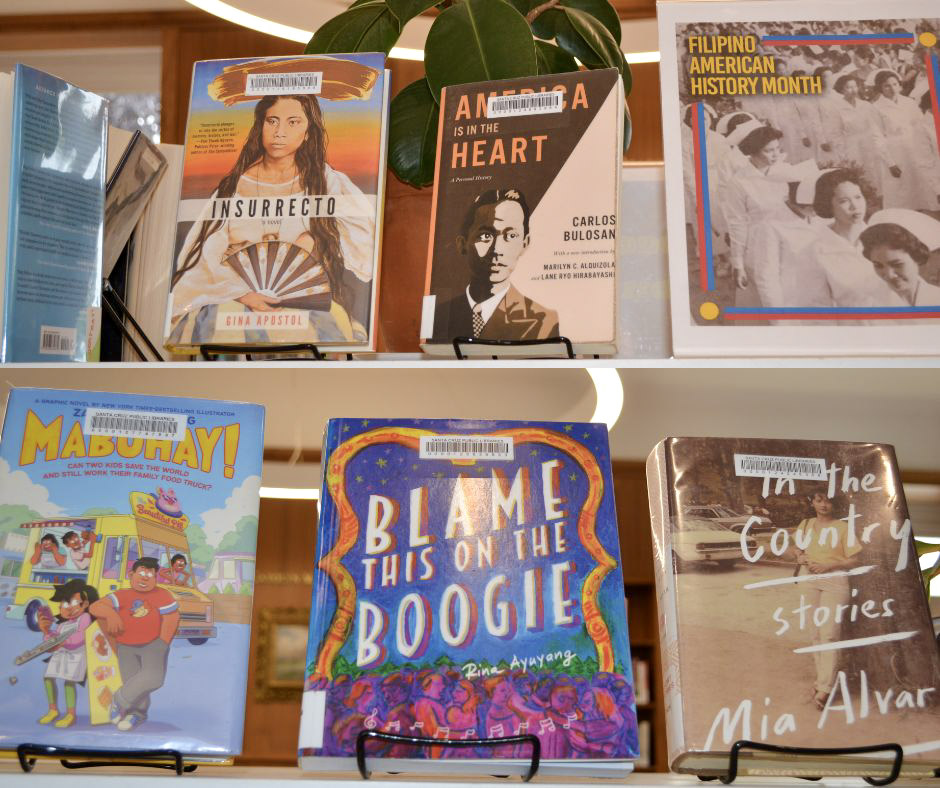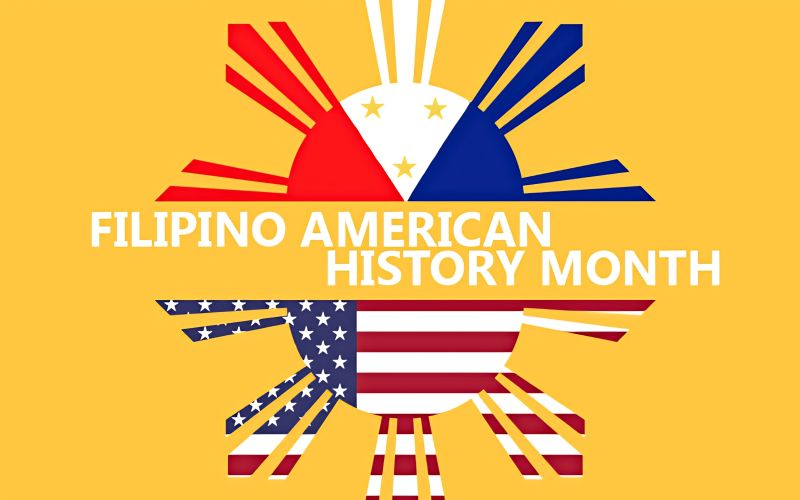Filipino American History Month (FAHM) is a designated celebration of Filipinos’ first arrival at Morro Bay on October 18, 1587. The Filipino American National Historic Society formally introduced October as Filipino American History Month with a resolution in 1992. It was not until 2009 that Congress officially recognized October as Filipino American History Month.
Filipinos have a long and storied history in America. From the Filipino soldiers who fought alongside Americans in WW2, to “The Manongs,” the farm laborers who fought to change American labor rights forever in the Delano Grape Strikes, led by Larry Itliong.
Larry Itliong left the Philippines for the United States in 1929, hoping to pursue a degree in law, but after arriving in Seattle, he found himself working in the Alaskan canneries. A natural leader for social justice, he organized multiple strikes beginning in the 1930s, including many in the Salinas Valley. He worked alongside Cesar Chavez and Delores Huerta, who joined the movement in September 1965, and this union came to fruition with the 1965-1966 Delano Grape Strikes. This led to massive reforms for the rights of farm workers and the birth of the United Farm Workers labor union.
There was also an influx of nurses and health care professionals as a result of the Immigration and Nationality Act of 1965. Filipinx registered nurses comprise 4% of the national healthcare workforce, though the Filipinx total population comprises only 1% of the total US population. Over 150,000 Filipina nurses have migrated to the United States since 1960, helping to ease the nursing shortage.
During the height of the pandemic, 30% of the health care workers who died from COVID were Filipinx, including 20% of the nurses.
The Manong generation (Filipino men who were recruited from mainly the Illocos region of Northern Philippines in the 1920s and 1930s) were farm and cannery laborers along the Pacific Coastal regions, including the Central Coast, where their descendants continue to live and thrive. The Tobera Project, founded by the UCSC Committee on Research and the Humanities Institute, sponsors the annual FAHM celebration during one weekend day at the Watsonville Plaza in October. The event includes Filipino vendors (the Lumpia Lady is very popular), music, dance, and, on occasion, poetry by Filipinx poets.
Thanks to Dana Gier, Garfield Park Library manager, a collection of books by Filipinx authors is on display and available to check out at the Garfield Park Library through October. This collection ranges from Carlos Bulosan’s depictions of early immigrant life in 1943 to a 2023 graphic novel by Zachary Sterling about modern FilipinxAmerican life. The books, both fiction and autobiographies, document the evolution of Filipinx contributions to American society, from discriminated laborers to respected members of society in multiple genres, including healthcare, literacy, and culture.

Gina Insurrecto by Gina Apostol (2018) is a novel about the 1901 massacre of 30,000 Filipinos by American troops in retaliation after Filipino nationalists killed thirty American soldiers. The story is described as two Filipina women protagonists who challenge each other about how the story should be told.
Blame this on the Boogie by Rina Ayayang (2018) is a true story that chronicles how a Filipina American girl navigates life challenges and mundanity through the disco years of song and dance routines of the period. Her narrative is described as weaving the “Great American Song Book” into her unique memories as a Filipina American.
Mabuhay, a Graphic Novel by Zachary Sterling (2023) received the Asian American Award for Literature. This graphic novel describes a story of Filipino life through family, food, and folklore.
America is in the Heart by Carlos Bulosan (1943) is a semi-autobiographical novel that narrates Bulosan’s journey from his village in the Philippines to his struggles as an immigrant in the United States. His stories depict nuanced experiences of racism and prejudice.
In The Country, Stories by Mia Alvar (2013) is the author’s first collection of nine character-driven short stories of Filipinx from all walks of life in the diaspora.
Contributed by Elbina Rafizadeh, Garfield Park Library Friends, President
Filipino American History Month 2025. FANHS. https://www.fanhs-national.org/filam/filipino-american-history-month-2025
Larry Itliong. (2024) U.S. National Park Service. https://www.nps.gov/people/larry-itliong.htm
Chasing the Dream: Caretakers. (2020). PBS SoCal https://www.pbs.org/wnet/chasing-the-dream/series/caretakers/
The Tobera Project. (2021) UCSC Committee on Research and The Humanities Institute. http://www.toberaproject.com
Leyva, E., Saligan, L., and Gosine, B.M.(2024) Filipino Nurses Help Shape the U.S. Healthcare System. NIH Record. Access: https://nihrecord.nih.gov/2024/10/11/filipino-nurses-help-shape-u-s-healthcare-system
Arguelles, D. BlogPost. (2017) Remembering the Manongs and Story of the Filipino Farmworker. National Parks Conservation Association. Access: https://www.npca.org/articles/1555-remembering-the-manongs-and-story-of-the-filipino-farm-worker-movement#:~:text=In%20the%201920s%20and%2030s,Cesar%20Chavez%20and%20Dolores%20Huerta.

